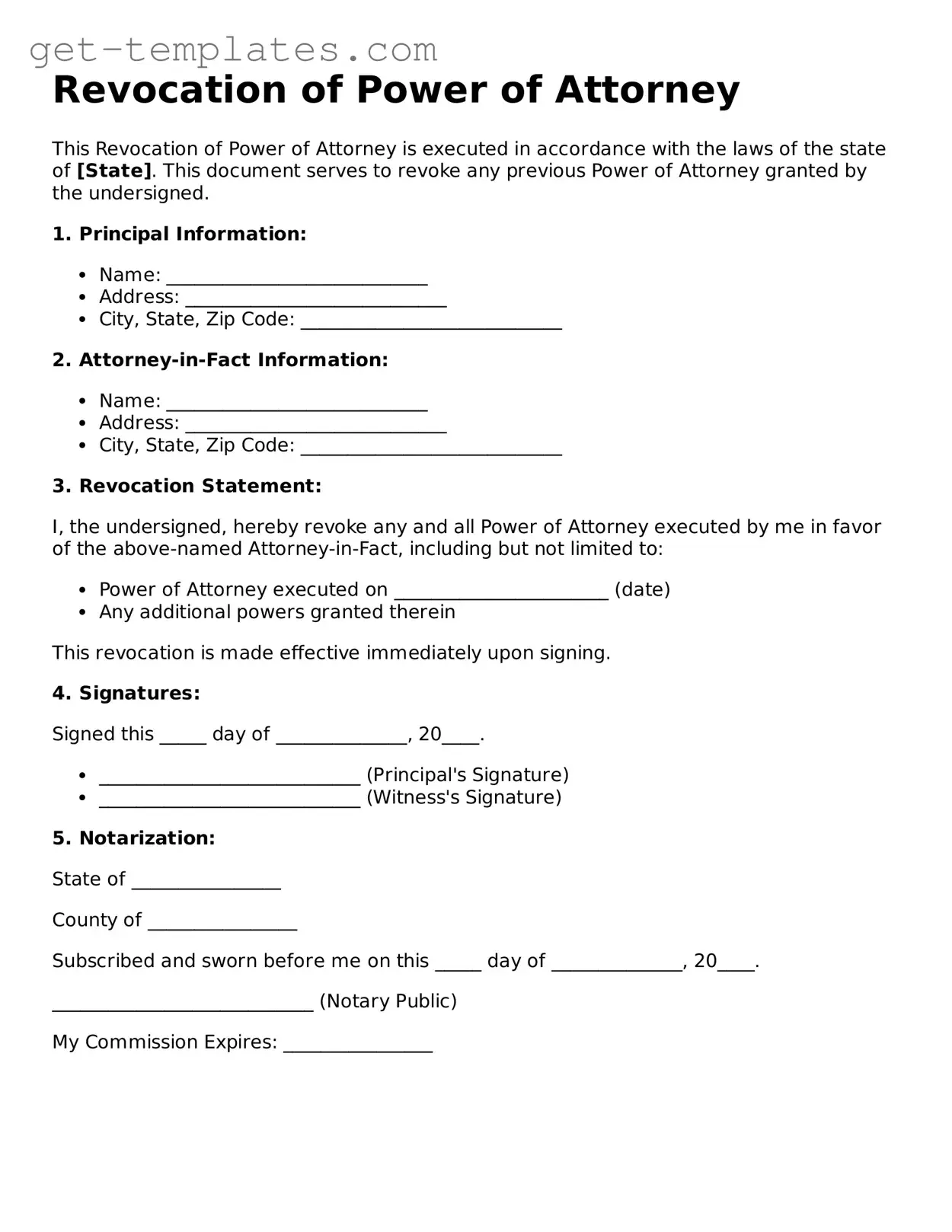Revocation of Power of Attorney
This Revocation of Power of Attorney is executed in accordance with the laws of the state of [State]. This document serves to revoke any previous Power of Attorney granted by the undersigned.
1. Principal Information:
- Name: ____________________________
- Address: ____________________________
- City, State, Zip Code: ____________________________
2. Attorney-in-Fact Information:
- Name: ____________________________
- Address: ____________________________
- City, State, Zip Code: ____________________________
3. Revocation Statement:
I, the undersigned, hereby revoke any and all Power of Attorney executed by me in favor of the above-named Attorney-in-Fact, including but not limited to:
- Power of Attorney executed on _______________________ (date)
- Any additional powers granted therein
This revocation is made effective immediately upon signing.
4. Signatures:
Signed this _____ day of ______________, 20____.
- ____________________________ (Principal's Signature)
- ____________________________ (Witness's Signature)
5. Notarization:
State of ________________
County of ________________
Subscribed and sworn before me on this _____ day of ______________, 20____.
____________________________ (Notary Public)
My Commission Expires: ________________
